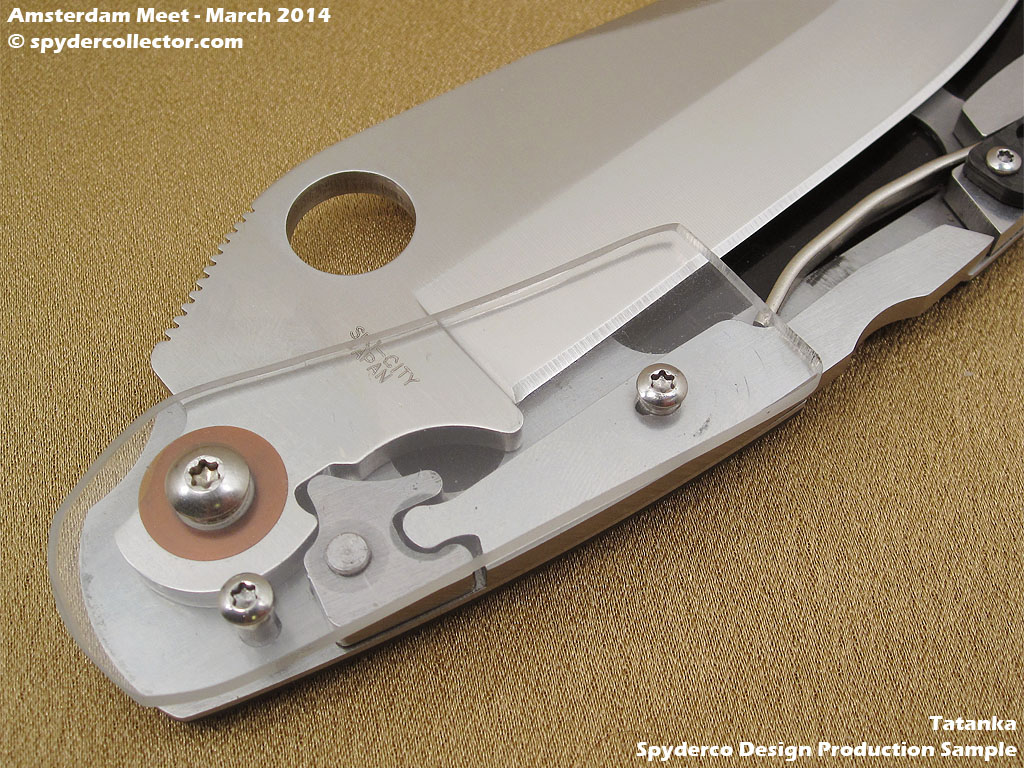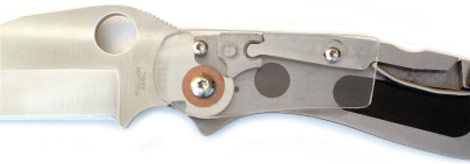The cam is not the only difference from a standard lockback. This lock also uses a stop pin.
A standard lock back works by using the "hammer" on the lock bar to stop the knife from both closing when locked and opening too far. This is why so many of them have a little wiggle. The tolerances have to be very tight between the hammer and the cutout to prevent play.
The triad lock for example adds a stop pin so that this can be avoided. The pin stops it in one direction and the lock bar hammer stops it in the other. This creates a tighter lockup. The Spyderco Chaparral uses an internal stop pin to accomplish something similar.
This power lock also uses a stop pin to control how far the blade opens. On the power lock instead of the hammer dropping into a cutout like other lockbacks this one has a cam that is pinned that engages the tang. The force when trying to close the knife is vertical, perpendicular to the knife. For the power lock to fail it would have to blow that pinned cam out the top of the handle. The force when trying to close a lockback is inline with the knife and it will usually fail by pulling the hammer off the end of the lock bar.
Also, if I am understanding correctly the Powerlock will require less spring pressure to be safe. A standard lockback to some extent needs a bit of spring pressure to hold the hammer down into the cutout and that the more pressure there is the more secure the lock is. It looks like the power lock relies more on geometry so it may not need as much spring pressure.
This is just the ramblings of a geeky guy so take it for what it's worth.

I own the Chinook 3.


